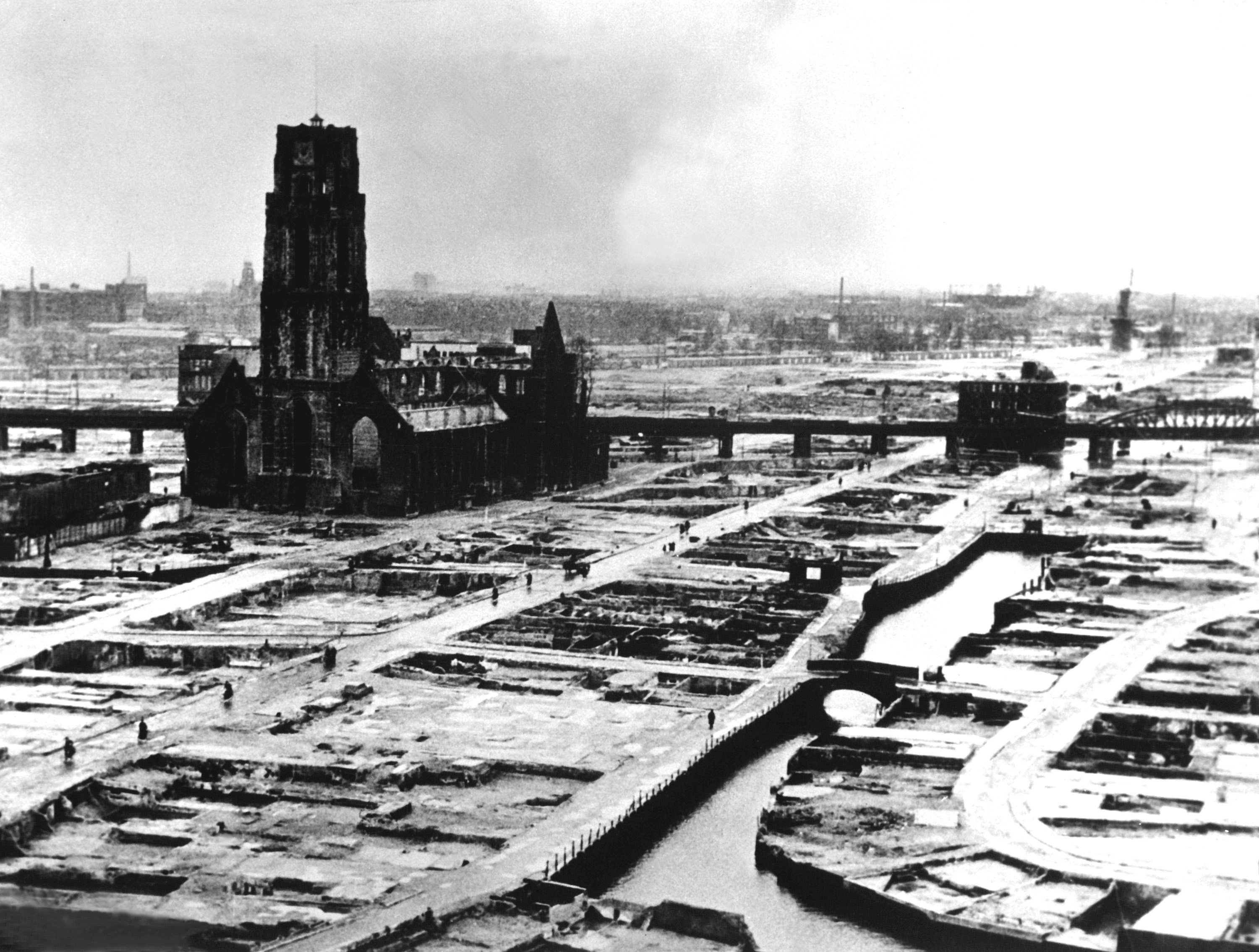
Netherlands in World War II
Despite Dutch neutrality, Nazi Germany invaded the Netherlands on 10 May 1940 as part of Fall Gelb (Case Yellow).[1] On 15 May 1940, one day after the bombing of Rotterdam, the Dutch forces surrendered. The Dutch government and the royal family relocated to London. Princess Juliana and her children sought refuge in Ottawa, Canada until after the war.
See also: Timeline of the Netherlands during World War II
German occupation lasted in some areas until the German surrender in May 1945. Active resistance, at first carried out by a minority, grew in the course of the occupation. The occupiers deported the majority of the country's Jews to Nazi concentration camps.[2]
Due to the high variation in the survival rate of Jewish inhabitants among local regions in the Netherlands, scholars have questioned the validity of a single explanation at the national level. In part due to the well-organised population registers, about 70% of the country's Jewish population were killed in the course of World War II – a much higher percentage than in either Belgium or France,[3] although lower than in Lithuania. Declassified records revealed that the Germans paid a bounty to Dutch police and administration officials to locate and identify Jews, aiding in their capture.[4] Communists in and around the city of Amsterdam organised the February strike – a general strike (February 1941) to protest against the persecution of Jewish citizens.
World War II occurred in four distinct phases in the Netherlands:
The Allies liberated most of the south of the Netherlands in the second half of 1944. The rest of the country, especially the west and north, remained under German occupation and suffered from a famine at the end of 1944, known as the "Hunger Winter". On 5 May 1945, German surrender at Lüneburg Heath led to the final liberation of the whole country.